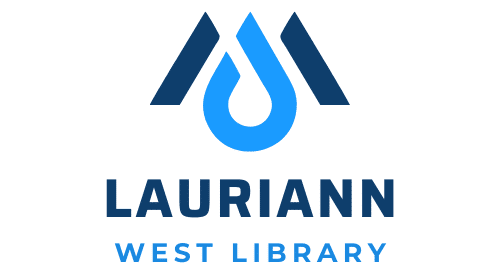Food demand increases as the globe’s population continues to grow. Coupled with the need for sustainable and fresh local produce, this highlights the importance of urban farming. It’s a practice that has the potential to revolutionize our cities and the way we consume food. Integrating urban agriculture into residential real estate opens up a variety of possibilities for sustainable living, while promoting community engagement and fostering a healthier lifestyle.
As the urban landscape continues to evolve, innovative ways are being developed to integrate farming into the heart of our cities and homes. This article will delve into the innovative ways to incorporate urban farming in residential real estate, transforming the cityscape and allowing communities to produce their own food locally.
In parallel : Can Smart Home Integration Contribute to Upgrading the Rental Sector in the UK?
Urban Vertical Farms: A Solution to Land Scarcity in Cities
In contemporary urban environments, land scarcity remains a significant issue. The need for housing, recreational facilities, and commercial properties often outstrips the availability of space. However, vertical farming presents an innovative solution to this challenge.
Vertical farms are high-rise structures filled with stacked layers of crops, utilizing vertical space rather than spreading horizontally. They can be integrated seamlessly into residential real estate, especially in high-rise apartments and condominiums. This method of farming makes an efficient use of space, and even a small balcony or a roof terrace can be converted into a productive green space.
Topic to read : What Is the Impact of the UK’s Green Belt Policy on Real Estate Development?
Moreover, vertical farms have a significantly lower environmental footprint than traditional farms. They use less water and land, and they eliminate the need for transportation by producing food where it’s consumed. They also have the potential to dramatically improve the aesthetics of cities, turning concrete jungles into lush green landscapes.
Community Gardens: Fostering Social Bonding and Local Food Production
Community gardens are another innovative way to integrate urban farming into residential real estate. They are shared spaces where residents can grow their own food. Not only do they produce fresh, local produce, but they also foster community spirit.
These gardens can be set up in vacant lots, rooftops, or communal spaces within residential complexes. They serve as a platform for residents to connect with each other, share knowledge about gardening, and contribute to their local food system. They are especially beneficial in densely populated areas, where access to fresh produce can be limited.
Residents can grow a variety of fruits, vegetables, and herbs in community gardens, promoting dietary diversity and improving food security. They can also participate in composting, creating a sustainable cycle of food production and waste management.
Rooftop Gardens: Utilizing Unused Space for Agricultural Production
Rooftop gardens are another innovative solution to the challenge of integrating farming in cities. Rooftops, especially in urban areas, are often under-utilized space that can be transformed into productive gardens.
Growing food on rooftops provides a host of benefits. Aside from the fresh, local produce, rooftop gardens also improve air quality by absorbing carbon dioxide and releasing oxygen. They also provide insulation for the building, reducing energy consumption for heating and cooling.
Another advantage of rooftop gardens is their potential to support local biodiversity. They can serve as habitats for various insects and birds, contributing to a healthier urban ecosystem.
By integrating rooftop gardens into residential real estate, developers can create environmentally friendly and sustainable living spaces that benefit both residents and the broader community.
Hydroponic Systems: High-Yield Urban Farming with Less Water
Hydroponic systems are an innovative form of agriculture that can be integrated into urban residential real estate. These systems grow plants without soil, using a nutrient-rich water solution instead.
Hydroponic systems can be installed in various locations, such as balconies, rooftops, or even indoor spaces. They are particularly suited to urban environments as they are compact, require little space, and are unaffected by soil quality or weather conditions.
One of the key advantages of hydroponics is its efficient use of water. The water in these systems is recirculated, meaning hydroponic farming uses up to 90% less water than traditional farming methods. It also produces higher yields, as the plants have direct access to nutrients and can grow faster.
Moreover, hydroponic systems can be automated and require less manual labor, making them ideal for busy city dwellers. By incorporating hydroponic farming into residential real estate, cities can foster a culture of sustainable urban agriculture.
Aquaponics: A Circular System for Urban Farming
Aquaponics is another innovative method to integrate urban farming into residential real estate. It is a symbiotic system combining aquaculture – the breeding of aquatic animals – with hydroponics.
In an aquaponic system, the waste produced by fish or other aquatic animals serves as a natural fertilizer for plants. In return, the plants purify the water, creating a sustainable, circular system that produces both fish and plants.
Aquaponic systems can be set up in various urban spaces, including balconies, rooftops, and basements. They are compact, energy-efficient, and produce little waste, making them an ideal solution for sustainable urban farming.
In conclusion, various innovative methods to integrate urban farming into residential real estate are being explored, each with its own benefits and potentials. These methods not only make efficient use of urban space but also contribute to the sustainability and self-sufficiency of urban communities. Urban farming is more than just a trend or a hobby – it is a viable solution to some of the most pressing challenges of our time, including food security, environmental sustainability, and community building.
Window Farming: A Sneak Peek into the Future of Urban Agriculture
Window farming is a relatively new concept that has been gaining popularity among urban dwellers. This innovative practice is a great way to integrate urban farming into residential real estate as it allows residents to grow their own food right in their windows.
Window farming offers a practical solution for those living in apartments or houses without outdoor space. It works by setting up a vertical hydroponic system in windows, allowing plants to grow in water-filled bottles suspended in a vertical row. This setup takes advantage of natural light, and because it’s housed in the window, doesn’t take up any extra space in the home.
Apart from being a great space saver, window farming also promotes a sustainable lifestyle. The hydroponic system recycles water, reducing consumption and making it an eco-friendly option. Furthermore, by growing food at home, residents can lessen their dependence on commercially grown produce, reducing carbon footprint associated with food transportation.
The convenience of this system makes it possible for residents to access fresh, healthy produce right at home. This not only encourages healthier eating habits, but also fosters a sense of achievement in growing one’s own food.
Edible Landscaping: Merging Aesthetics with Urban Agriculture
Edible landscaping is another creative method that combines beauty and practicality, particularly in urban areas. Rather than the traditional ornamental plants, flowers, and shrubs seen in most landscapes, edible landscapes use vegetables, herbs, and fruit-bearing trees.
Edible landscaping allows residents to utilize their yard space for food production, providing an excellent way to integrate urban farming into residential real estate. This method of urban agriculture not only beautifies the surroundings but also provides homeowners with fresh produce right from their yard.
By selecting a variety of plants with different colors, shapes, and textures, residents can create aesthetically pleasing and functional landscapes. Some edible plants, such as herbs and vegetables, also have the added benefit of deterring pests and improving soil health.
Edible landscaping encourages community engagement as well. Neighbors can share surplus produce, exchange gardening tips, or even work together to create larger community gardens. This fosters a sense of community while promoting sustainable living practices.
Conclusion
The integration of urban farming into residential real estate is not just a passing trend, but a move towards a more sustainable and self-reliant lifestyle. From vertical farms in high-rise apartments to community gardens in shared spaces, every innovation offers unique benefits and opportunities.
New practices such as window farming and edible landscaping add further dimensions to urban agriculture, making it more accessible and appealing. These innovative approaches not only contribute to food security and environmental sustainability but also foster community engagement and promote healthier lifestyles.
As urbanization continues to grow, so does the need for sustainable food production methods. Urban farming offers a viable solution to this pressing need, transforming city landscapes and lifestyles. By integrating urban farming practices into residential real estate, we can create healthier, greener, and more vibrant cities for the future.











